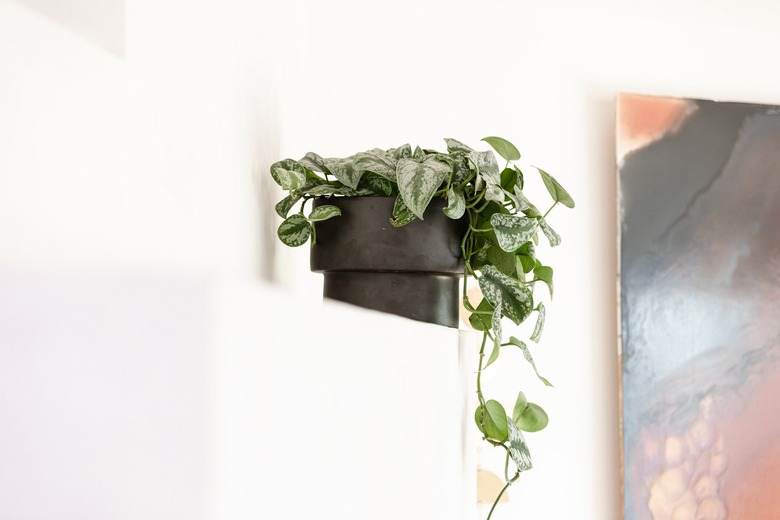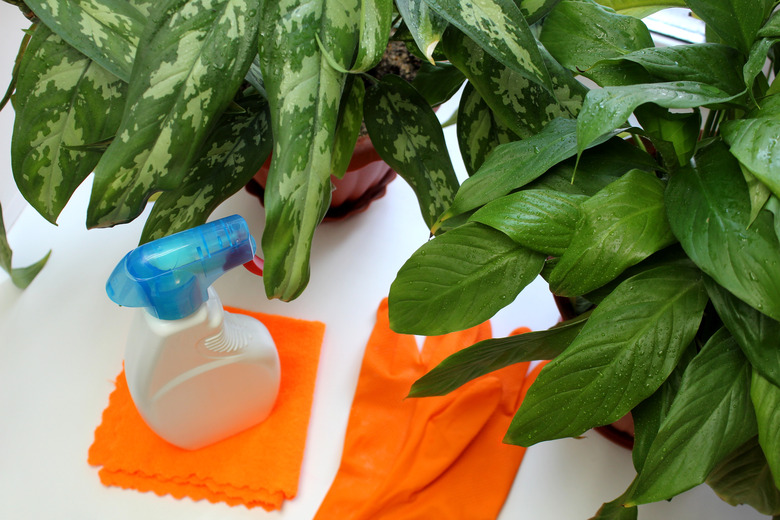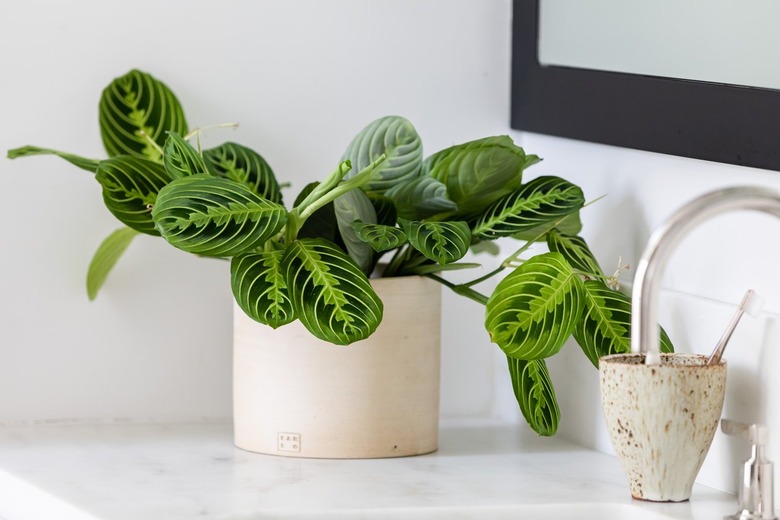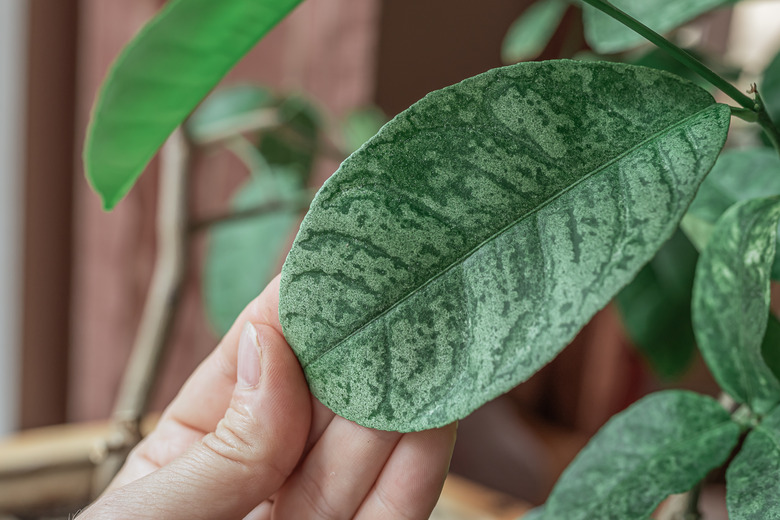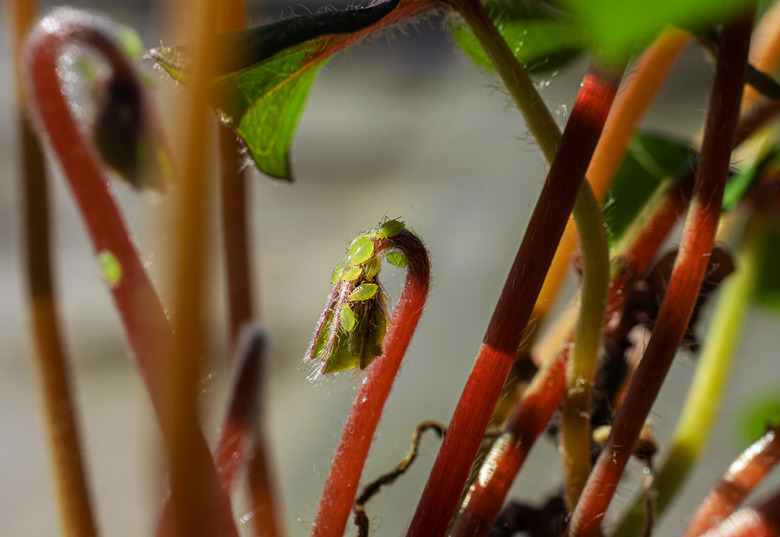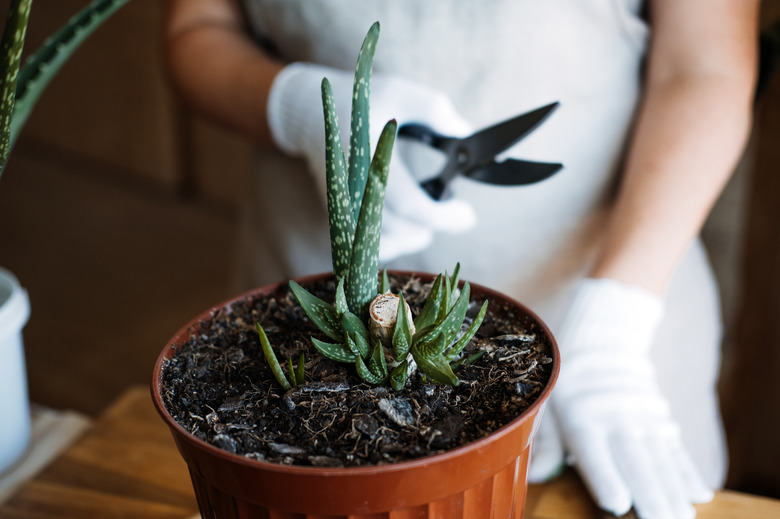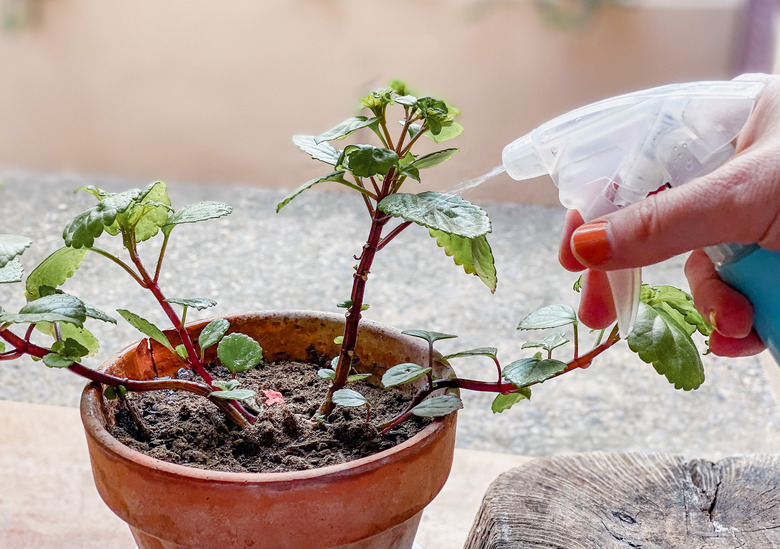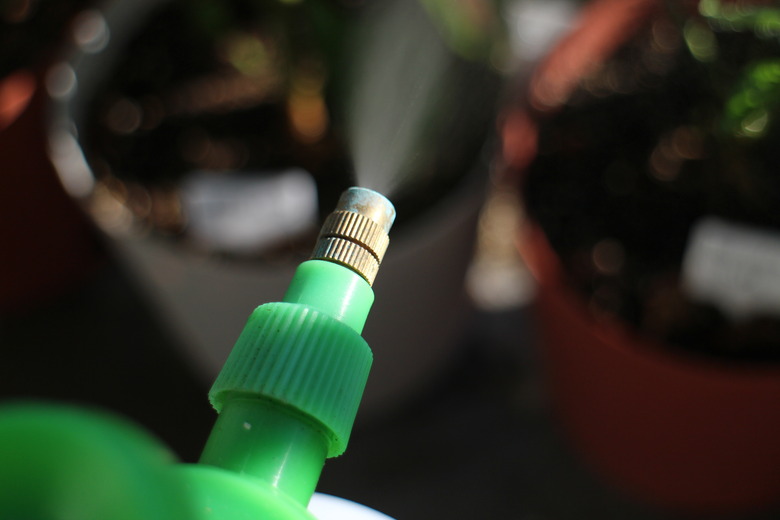How To Manage Indoor Plant Pests: A Gardener's Ultimate Guide
We may receive a commission on purchases made from links.
Just because you site a plant indoors doesn't mean it is safe from pests. Some of the same pests that damage your outdoor flowers and foliage can also be indoor plant pests and attack your houseplants. Indoors, insects have few — if any — predators, and their numbers can increase rapidly. However, if you take steps to prevent houseplant pest infestation and detect problems when they are just starting, you can defend your plants and keep them healthy.
Keep Plants Healthy
Keep Plants Healthy
When it comes to managing indoor plant pests, prevention is almost always easier than treating an infestation. By taking certain steps, it is possible to decrease the chances that your indoor plants will fall victim to insects.
First, keep in mind that healthy plants are strong and vigorous, which are important qualities in keeping pests at bay. When a plant is stressed, it is vulnerable to pest attack and injury. Learn about the optimal growing conditions of every plant inside your home and do your best to give them the site and care they need. Knowing and providing the proper sun exposure and irrigation are at the top of the list.
Second, when it comes to filling a container with soil, get some potting mix from the garden store (make sure the bag doesn't have holes in it). Soil from the backyard can contain pests and/or their eggs.
Finally, add leaf washing to your list of plant chores. This only works for smooth foliage, but a wash or wipe down every week helps keep pests away. It also spiffs up the look of the houseplant and gets rid of dust.
Prevent Pests From Entering With a Plant
Prevent Pests From Entering With a Plant
Since insects are outside and houseplants are inside, it may seem that keeping the two apart would be easy. Using well-fitting screens on windows and doors helps make this a reality. But many pests actually get a ride into the house in the soil or on the foliage of the plant they then attack. Preventing this from happening reduces the chance that indoor plant pests will be a problem.
When you are houseplant shopping, check the container and the leaves for signs of pests. Do the same thing if a plant has been put outside for the warmer season. When a container plant is outdoors, insect pests may use the pot's drain holes as points of entry. Take each houseplant out of its container and inspect the outside of the root ball for bugs.
You should also keep new plants in quarantine for a month or so when they first arrive in your home. Infestations of scale insects, mealybugs, and whiteflies are almost always introduced from newly acquired plants. A quarantine doesn't mean you have to hide the new plant in a kitchen cabinet; just keep the plant in a room without other plants. During this period, inspect the plant a few times a week, looking at both sides of the leaves. Some gardeners use a magnifying lens for this in order to catch the smallest insects and larvae.
Regularly Look Out for an Indoor Pest Problem
Regularly Look Out for an Indoor Pest Problem
Detecting an indoor plant problem can be more difficult than it sounds. Of course, you may see creepy crawlers sitting on your plants and chowing down, but this is not the only way an indoor pest problem can manifest.
Common indoor houseplant pests can look very different from a beetle or a fly. Some, like the aphid, are very small — no bigger than 1/6 inch and often smaller. Mealybugs, on the other hand, look like small tufts of cotton. If you see wispy webbing on a leaf, it's a sign of spider mites, which are so small that they are hard to spot. Waxy or brown blobs might be scale insects.
Sometimes, damage from indoor houseplant pests is easier to spot than the pest itself. Look for:
- Yellowing leaves
- Chewed foliage
- Twisted or warped leaves
- Wilted leaves
- Dehydrated leaves
- Falling leaves
- Mottled leaves with little dots
- Sooty foliage or stems
- Stunted plant growth
Common Indoor Insect Plant Pests
Common Indoor Insect Plant Pests
Many different types of pests can damage indoor plants, but if you notice pest damage, the bug attacking your plant is likely to be one of the most common houseplant pests. It's a good idea to become familiar with these pests so that you can recognize them and the damage they cause. Here are six of the most common pests that damage houseplants.
Aphids
Description: Aphids are small, chubby, sap-sucking insects that are green, gray, or black. They are found on the underside of leaves, and their eggs look like small pieces of rice.
Damage: You'll see sticky aphid honeydew substance on leaves; twisted, stunted, curled, and sucked leaves; and sooty mold on foliage.
Mealybugs
Description: Mealybugs are oval, whitish, waxy bugs found crawling slowly on the underside of leaves. Their eggs look cottony, while nymphs are pinkish.
Damage: You will notice honeydew residue (a clear, sticky substance) on leaves or wilting, yellowing, falling leaves.
Spider Mites
Description: Spider mites are extremely small mites that look like tiny spiders with eight legs. They leave webbing on the underside of leaves.
Damage: You'll see tiny stippling spots where the mites suck out plant liquids and leaves curling up from dehydration.
Thrips
Description: Thrips are very small yellow or black insects found in leaf folds. They are often described as dust-like.
Damage: You'll notice leaves turning silvery and dropping, flower petals streaking, or flower buds dying without opening.
Scales
Description: Scales are sap-sucking, small insects. Females are generally legless and protected by an armorlike disc, which may be unattached to the insect (armored scale) or attached to it (soft scale). The armor resembles fungus or a leaf blemish.
Damage: You'll notice sticky honeydew or black sooty leaves.
Fungus Gnats
Description: Adult fungus gnats are weak fliers that hang around the plant. Larvae are in the potting soil; they are white with black heads
Damage: Adults are only annoying, while larvae can eat roots, causing a plant to look sickly and drop leaves. In extreme cases, they can lead to houseplant death.
Other houseplant pests you may see on your plants include:
- Springtail
- Whiteflies
- Broad mites
- Leafminers
- Beetles
- Caterpillars
Treat Houseplant Pests Without Toxic Chemicals
Treat Houseplant Pests Without Toxic Chemicals
Once you have identified a houseplant that is being attacked by pests, immediately move it away from other plants to quarantine it. The fewer plants you have to treat for pests, the easier it will be. Then, you can move on to getting rid of the pests.
When treating houseplants, don't reach for chemical pesticides or insecticides, at least not at first. There are a number of ways to eradicate plant pests without spraying toxic substances, and these should be attempted first:
- Pick off the pests by hand. This is usually easier for larger pests, like beetles or caterpillars that you would find in the garden, but sometimes, it is possible with houseplants. For smaller bugs, try using a cotton swab dipped in rubbing alcohol. This can be effective for aphids or mealybugs, for example. Scales can be scraped off with a fingernail.
- Cut off infected leaves. This only works if you catch the infestation in the very early stages. Use garden scissors and snip off the part with active pests. For more extensive infestations, you can remove a few healthy sprigs for cuttings and toss the remainder.
- Give the plant an extended shower. Water alone can eliminate some pests, like spider mites, but you need to spray not just the top of leaves but all parts of the plant. The underside of leaves is the favorite place for houseplant pests to hang out, so spraying both sides is critical. Repeat several times to eliminate as many as possible.
- Use yellow sticky traps. These are sold in garden stores, although frugal gardeners can make their own using cardboard covered with a sticky substance. When flying insect pests, like whiteflies or fungus gnats, land on the traps, they will be stuck. This only captures adults, however. Eggs and larvae may still remain on the plants or in the potting soil.
Treat Houseplants With Organic Pesticides
Treat Houseplants With Organic Pesticides
There are several naturally occurring oils that you can use to combat pests on your houseplants. These are less toxic alternatives that belong on the top of your pesticide list. When applying them, always try the oil on an individual leaf first to make sure the houseplant isn't sensitive to the oil.
- Apply neem oil. This oil is made from seeds of the neem tree, which is native to India. It is a strong and effective
organic insecticide and a safe, inexpensive option for houseplant pests. Neem oil prevents pests from eating the plant, repels pests, and smothers pests when it is sprayed on them. Spray it without diluting for the strongest concentration. - Try plant oil extracts. These are oils, like canola, cottonseed oil, garlic oil, clove oil, or sesame oil. Like neem oil, these are contact insecticides that only kill on contact. Repeated spraying may be required, but these oils can be useful with scales, aphids, whiteflies, and spider mites.
Treat Houseplants With Chemicals
Treat Houseplants With Chemicals
Chemical pesticides may be used if nonchemical means don't solve the pest issue. In order to use these chemicals in the most effective manner, you will need to identify the pest damaging your houseplants. A different type of pesticide is necessary for different types of pests.
One of the first chemicals to try is insecticidal soap. These are contact insecticides that are most effective when applied in the early stages of a plant infestation. However, some common houseplants are sensitive to this soap, so you'll want to test it on a small area to make sure that the plants are not damaged by it.
As contact insecticides, the products only kill insect pests when they come in direct contact with them. Once the soap dries, it is not effective for any houseplant pest. Insecticidal soap sprays are available in stores and can work well for soft-bodied insect pests. This includes aphids, mealybugs, spider mites, and the early stages of scales. Use it several times to also kill the pests in the egg stage.
If this doesn't work for your houseplant pests, visit a garden store and ask for a chemical product specifically for the pest attacking your plants. Use it according to label directions. It's a good idea to take the plant and the spray outside so that you won't get the chemical inside your house.
